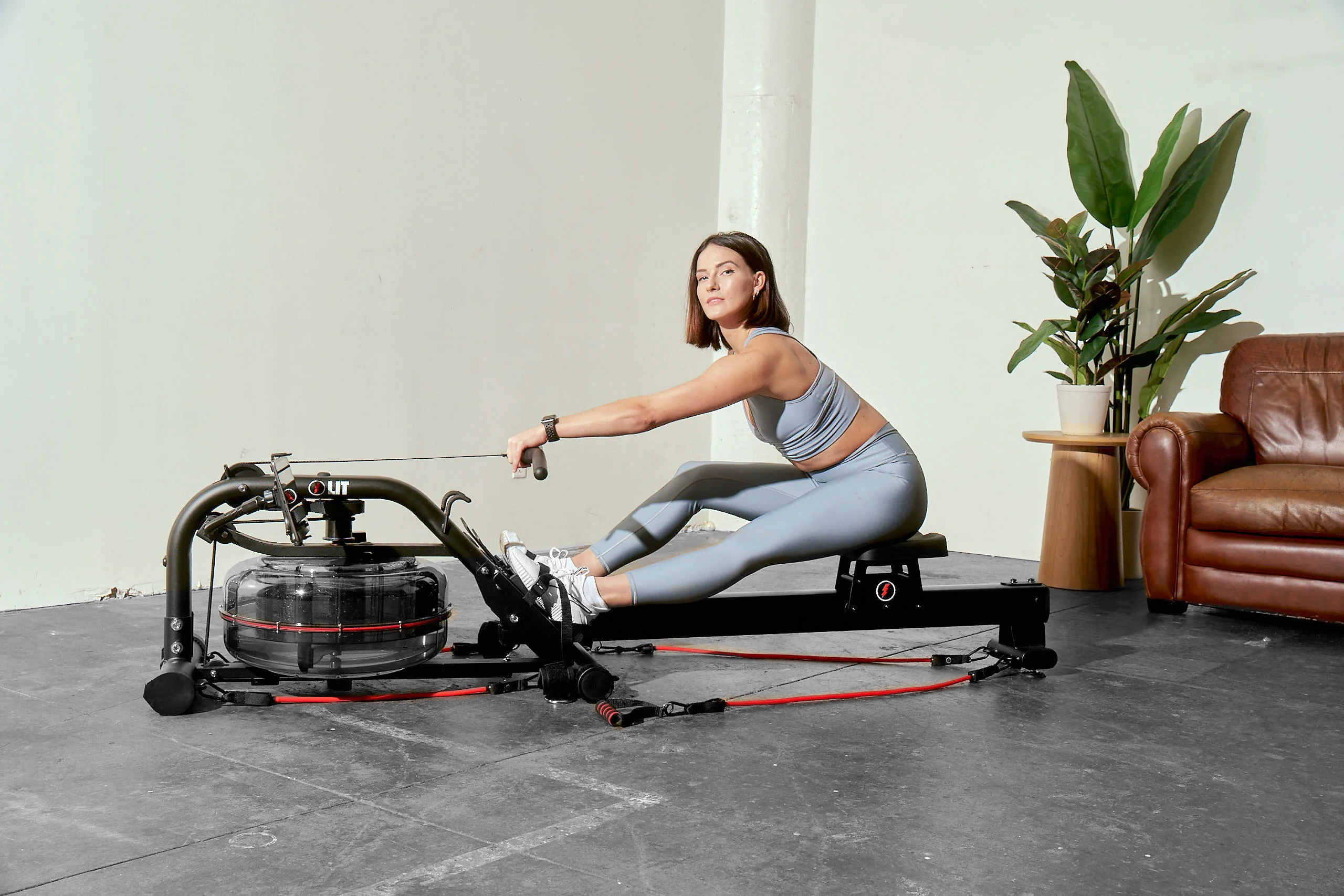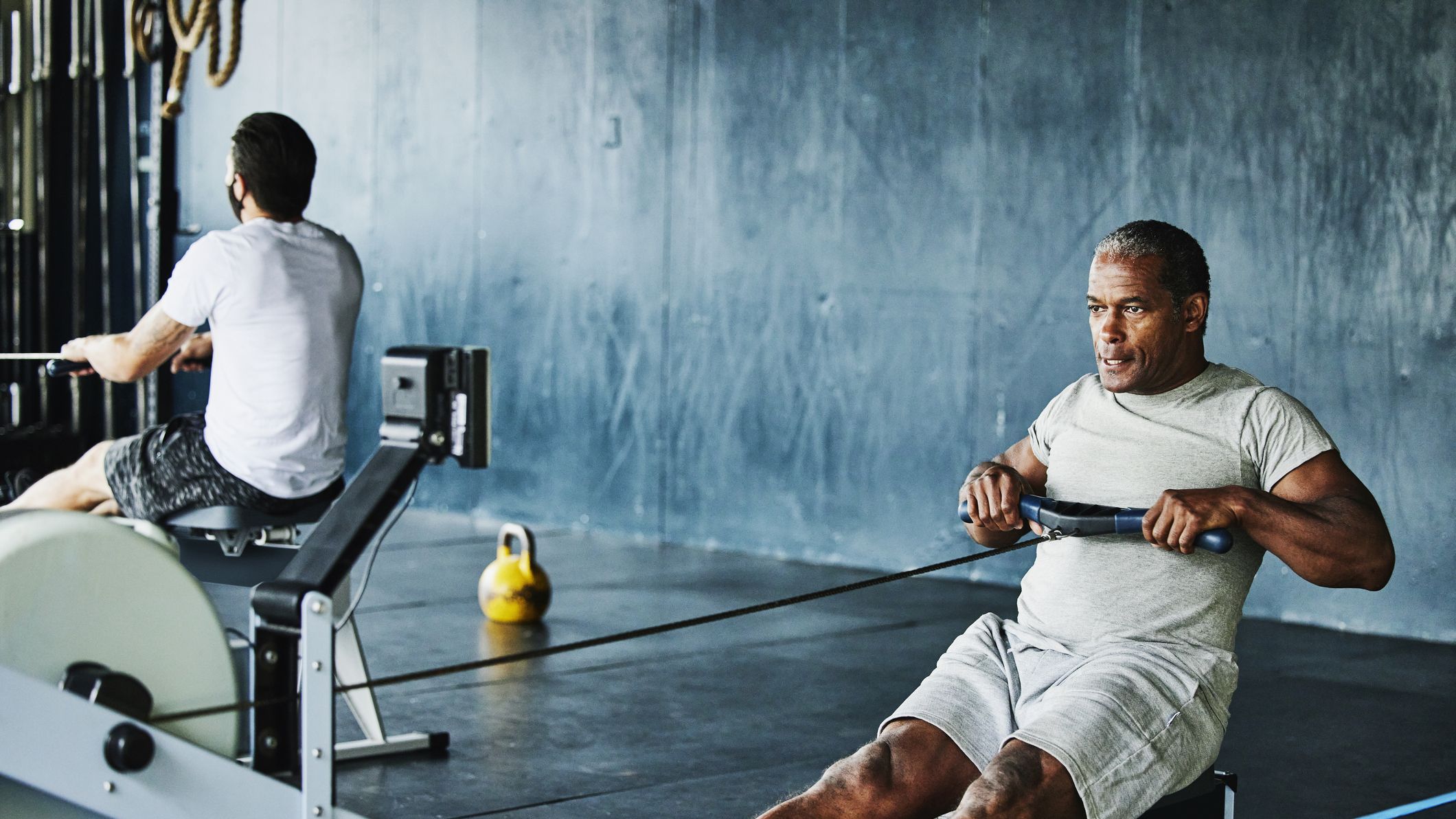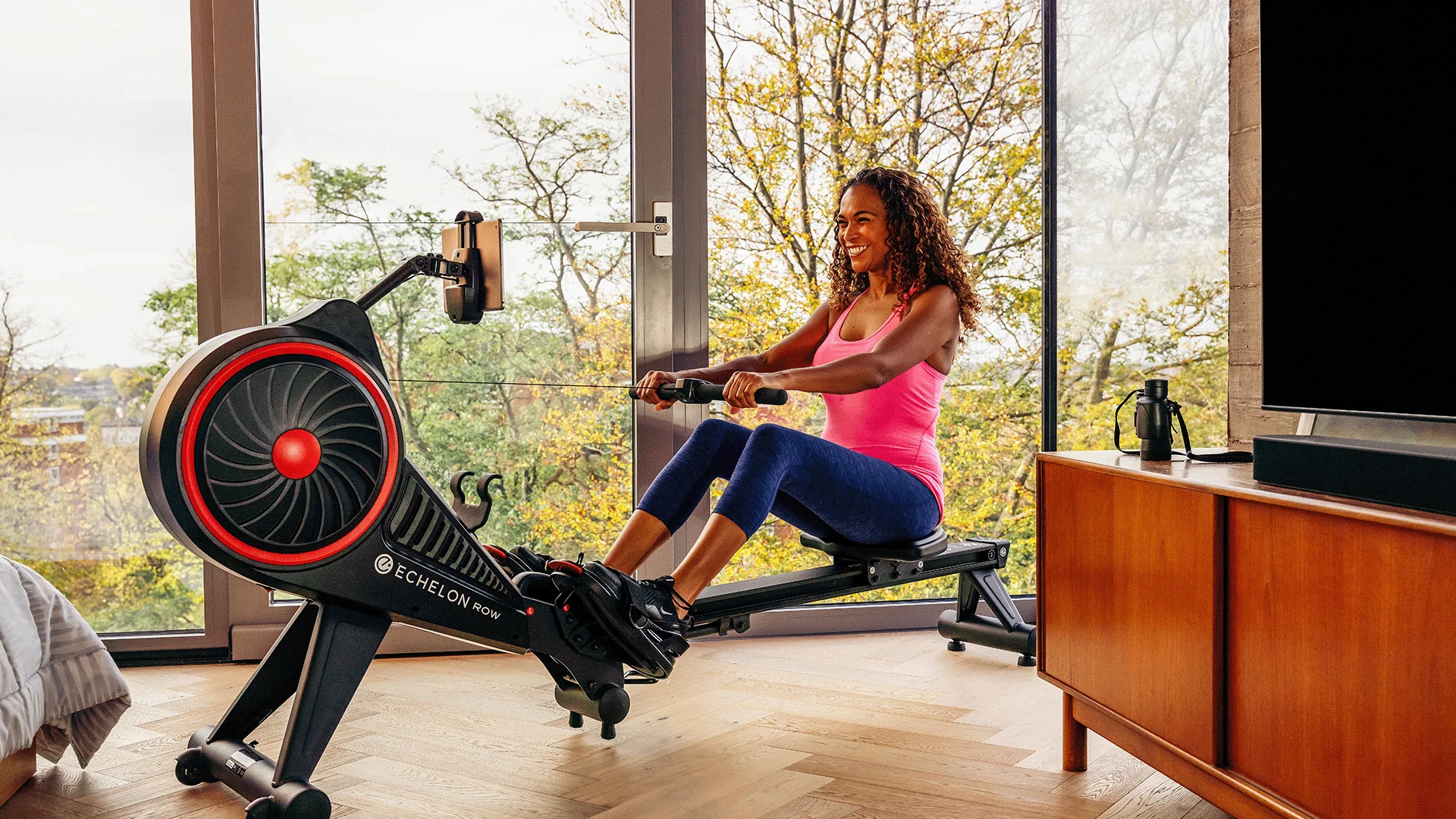Using a rowing machine is an efficient way to receive an effective cardiovascular and strength training workout. The smooth, full-body rowing motion provides a host of physical and mental health benefits to those who incorporate regular sessions into their routine. This guide will outline 10 of the top benefits that can be obtained from the frequent and proper use of a rower. Read on to learn more about the top 10 reasons you should consider making a rowing machine part of your regular exercise regimen.

Contents
10 Benefits of Rowing Machine Exercise
Let’s take a closer look at the top 10 benefits of rowing machine exercise:
- Low-Impact Workout: Rowing is a low-impact exercise that puts minimal stress on your joints, making it perfect for individuals of all fitness levels.
- Full-Body Workout: Unlike some other forms of exercise, rowing engages multiple muscle groups simultaneously. It works your legs, core, arms, and back, providing a comprehensive full-body workout.
- Convenience of Home Gyms: Indoor rowing machines are an excellent addition to your home gym setup. They offer a convenient way to exercise without the need to leave your house or pay for a gym membership.
- Positive Impact on Mental Health: Regular rowing can have a positive impact on your mental well-being. It helps reduce stress, improve mood, and increase overall cognitive functioning.
- Accessibility: Rowing machines are accessible to people of all ages and fitness levels. Whether you’re a senior looking to stay active or an athlete recovering from an injury, rowing can be tailored to your specific needs.
- Cross-Training Benefits: Rowing machines are excellent for cross-training. They provide a challenging cardio workout that complements other forms of exercise like weightlifting or running.
- Improved Posture: Rowing helps strengthen your core and back muscles, leading to improved posture. By maintaining proper form and alignment during rowing exercises, you’ll develop a more upright and stable posture.
- Efficiency: If you’re looking for an efficient workout, rowing is a great choice. It burns a significant number of calories in a short amount of time, making it an effective option for weight loss and improved cardiovascular fitness.
- Endurance Enhancement: Regular rowing can improve your endurance levels over time. By gradually increasing the intensity and duration of your rowing sessions, you’ll build stamina and be able to push yourself further.
- Mind-Body Connection: Rowing exercises require concentration and coordination, enhancing the mind-body connection. It helps you develop better focus, balance, and overall spatial awareness.
How to use a rowing machine?
Here’s a step-by-step guide on how to use a rowing machine effectively:

- Start by adjusting the foot straps to ensure a secure and comfortable fit. Place your feet firmly against the footrests, keeping your heels down and toes pointed slightly upward.
- Sit on the seat and grab the handle with an overhand grip. Your arms should be fully extended and your back straight.
- Engage your core muscles and push back with your legs, extending them fully. As you do this, lean back slightly, keeping your back straight and shoulders relaxed.
- Once your legs are fully extended, begin pulling the handle towards your chest, bending your elbows. Keep your wrists straight and engage your upper back muscles.
- As you pull the handle towards your chest, lean back slightly more, keeping your core engaged.
- When the handle reaches your chest, reverse the movement by extending your arms, leaning forward from your hips, and bending your knees to slide back to the starting position.
- Repeat this rowing motion in a smooth and controlled manner, maintaining proper form throughout the exercise.
Common rowing machine mistakes to avoid
Using a rowing machine correctly is essential to getting the maximum physical benefits from your workout. However, there are some common mistakes that can nullify these benefits. Take note of these pitfalls and avoid them to make the most out of your rowing sessions:

1. Improper Form:
One of the main reasons people fail to experience the full benefits of indoor rowing is improper form. It’s crucial to start with a trainer or follow a proper guide to learn the correct form. Here are some common mistakes to avoid:
- Neglecting Core Engagement: When extending your legs back, be sure to engage your core. Failing to do so can transfer pressure to your hips and lower back, putting unnecessary strain on these areas.
- Slumping Forward and Rounding Your Back: Maintaining a neutral position is crucial for your back and shoulders. Avoid slouching and rounding your back, which can lead to back pain. Sit up straight, expanding your chest while rowing.
2. Combining Leg Push and Leaning Back Simultaneously:
Another common mistake is pushing with your legs and leaning back at the same time. It’s important to keep these movements separate for effective rowing. Follow these steps:
- Leg Push: Push with your legs using your leg and glute muscles to extend them fully.
- Lean Back: Once your legs are fully extended, lean back using your abdominal muscles while keeping your core tight.
- Pull Your Arms: Only after leaning back, pull your arms back toward your body, engaging your back muscles.
3. Overexertion and Fatigue:
To make rowing a consistent habit, it’s crucial not to push yourself to the point of fatigue. Exercising with proper form is essential for avoiding injury and maintaining results. Here are some tips:
- Don’t Overdo It: Stop exercising when you’re too tired to maintain proper form. Pushing through fatigue can compromise your technique and increase the risk of injury.
- Avoid Intense Workouts Before Rowing: Engaging in high-load weightlifting sessions or other intense workouts before a rowing session is not recommended. It’s best to approach rowing with fresh muscles.
FAQs:
Can anyone use a rowing machine?
Yes, rowing machines are accessible to people of all ages and fitness levels. They can be adjusted to accommodate different levels of resistance and intensity, allowing individuals to progress at their own pace.
Is rowing a good form of cross-training?
Yes, rowing is an excellent form of cross-training as it engages different muscle groups and provides a cardiovascular challenge. It can complement other forms of exercise, such as running or weightlifting, and help prevent overuse injuries.

Hello, I’m Ravindra. Over the years, I’ve immersed myself deeply into the world of fitness and health, transforming both my body and mind. Writing has allowed me to share my journey, insights, and expertise with those just starting out and seasoned fitness enthusiasts alike. Beyond just routines and diets, I believe in inspiring others to adopt a holistic approach to well-being.
